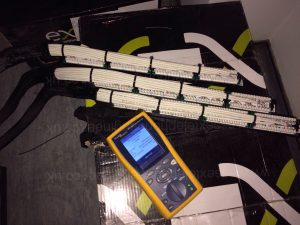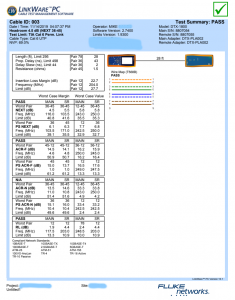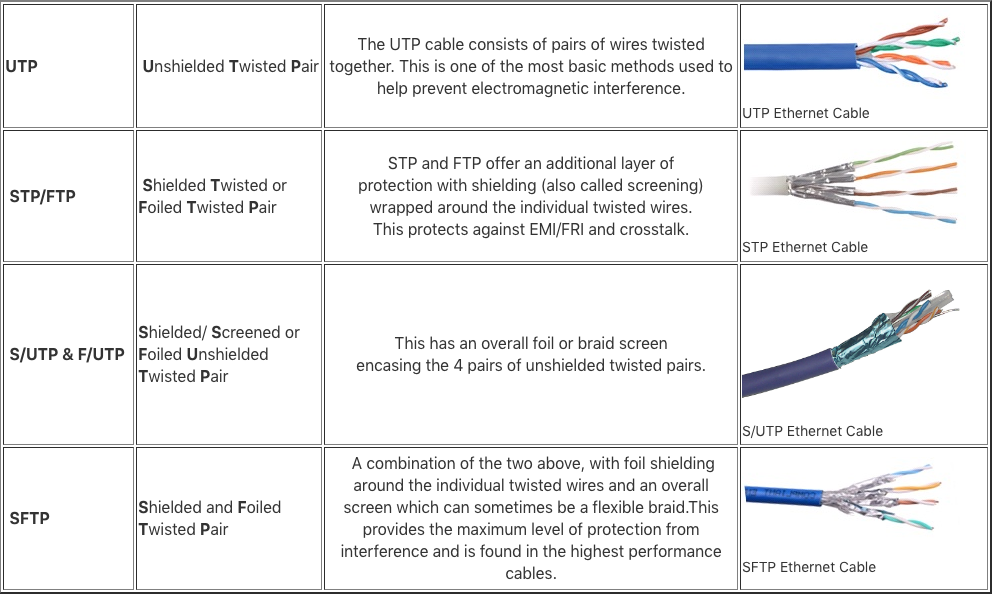Ethernet Cable & Data Cabling
Practical advice on Cat5e, Cat6 and Cat6a — plus professional certification testing so your network performs exactly as it should.
Cat5e (Enhanced)
Up to 1 Gbps over standard lengths. Ideal for general home and light business use.
Uses 4 twisted pairs (blue, orange, green, brown) for Gigabit Ethernet.
Flexible & widely available
Perfect for most rooms
Cat6
Designed for 1 Gbps with lower crosstalk and headroom. Can support 10 Gbps on shorter runs in favourable conditions.
Thicker cable with tighter twists and often a central separator to reduce interference.
Extra headroom
Backbone links
Cat6a (Augmented)
Engineered to support 10 Gbps up to 100 metres. Bulkier cable and connectors; best suited to commercial installs, long runs,
PoE‑heavy environments and future‑proof backbones. Overkill for most domestic rooms.
Commercial & long runs
Noise‑prone areas
Cable Testing

Which cable should you choose?
- Everyday home use: Cat5e is typically ample (1 Gbps).
- New builds / office refurbishments: Cat6 for rooms, Cat6/Cat6a for risers or key backbones.
- Studios, NAS or high‑throughput work: Consider Cat6a for specific runs where 10 Gbps is planned.
Most broadband connections are well below 1 Gbps; the main benefit of higher‑grade cabling is for internal transfers and future‑proofing.

Cable Testing & Certification
We use professional certification testers (e.g. Fluke DTX‑1800, Fluke DSX series) to verify performance to the relevant
TIA/ISO standards. A full test report can be supplied on completion.
- Confirms wiremap, length, attenuation, NEXT/PS‑NEXT, return loss and more
- Proves the install meets the category rating — not just continuity
- Essential for warranty and for business‑grade installations
Why cheap “beepers” aren’t enough
Basic continuity testers used by amateurs or non‑specialists only light up to show pins connect.
They do not assess speed capability, crosstalk or noise — so they can’t certify your cabling.
If you’ve paid for quality, insist on a certification report.
Business data installs should include a written warranty (often 15 years when installed and tested to manufacturer specifications).
 This is how a certification test of your cabling should be handed over to you.
This is how a certification test of your cabling should be handed over to you.
It’s shocking when we see how amatuer installers do not give you a “network” of cat cabling.
We are qualified LAN design consultants and too often find the cabling
“you think you have had installed professionally” – completed by electricians
with no understanding of what a data network is or how it should work.
Network Design Best Practice
- Star topology to a cabinet: All new data runs should terminate at the data cabinet on patch panels.
No stray point‑to‑point runs. - Router at the cabinet: The broadband router or gateway should live at the cabinet,
feeding the network switch which then patches out to rooms. - Label & document: Every outlet and patch should be labelled and mapped.
Keep the certification report with your handover docs.
Types of Ethernet cable

